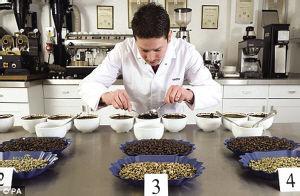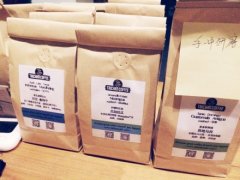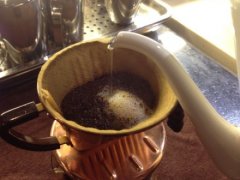Tips for cup tasters: introduction to cup testing
When testing a cup of coffee, we should distinguish whether the flavor, alcohol thickness, acidity and wet aroma of the coffee are pleasant. Most cup tasters use the following criteria to judge coffee.

Acidity Acidity:
Acidity is an essential feature of coffee and is the feeling of dryness that coffee produces at the edge of the tongue and the back of the palate. The effect of coffee acidity is similar to that of red wine, with a strong and exciting texture. Without enough acidity, the coffee tends to be flat. Acidity is different from sour taste, which is an unpleasant and bad taste feature.
Wet aroma Aroma:
The wet aroma is difficult to separate from the flavor. If there is no sense of smell, our basic sense of taste is only sweet, sour, salty and bitter. The wet aroma enriches the taste discrimination of the soft palate. Some subtle and delicate differences, such as the "floral" or "wine" characteristics, come from the wet aroma of brewed coffee.
Alcohol thickness Body:
Alcohol thickness is the feeling of coffee in the mouth, that is, the feeling of stickiness, thickness and richness produced by coffee acting on the tongue. The difference between drinking whole milk and drinking water is a good example. Our perception of the alcohol thickness of coffee is related to the oil and solids extracted by coffee. The alcohol thickness of Indonesian coffee is significantly higher than that of South and Central American coffee. If you are not sure about the alcohol thickness difference of several types of coffee, try adding the same amount of milk to the coffee. Coffee with high alcohol thickness will retain more flavor when diluted with milk.
Flavor Flavor:
Flavor is the overall feeling of coffee in the mouth. Acidity, wet aroma and alcohol thickness are all components of flavor, and it is their balance and homogenization that produce our overall sense of flavor.
Here are some typical flavor features:
General flavor characteristics General flavor characteristics:
Richness-refers to the thickness and richness of alcohol;
Complexity-the feeling of multiple flavors
Balance-all basic palate features are satisfactory, and no one taste masks the other.
Pleasing flavor features:
Fresh, bright, dry, light, or lively-(common in Central American coffee):
Caramel-like sugar or syrup
Chocolate-like unsweetened chocolate or vanilla aftertaste
Delicious-delicate flavor felt on the tip of the tongue (Arabica beans from New Guinea)
Earthy-the aroma of the earth (typical Sumatran coffee)
Fragrant-an aromatic quality, ranging from floral to spicy
Fruity-an aromatic quality reminiscent of berries or oranges
Sweet and mellow-round, smooth, lack of acidity
Nutty-- similar to the aftertaste of fried nuts
Spicy-reminiscent of the flavor and aroma of various spices
Sweet-- non-astringent
Wild-a wild flavor that is generally not considered pleasant; common in Ethiopian coffee; alcoholic flavor-an aftertaste reminiscent of fully ripe wine (common in Kenyan and Yemeni coffee).
An unpleasant flavor feature:
Bitter-A taste produced at the root of the tongue, often caused by overbaking
Dull, non-irritating-neutral in flavor
Charcoal-smelling of charred carbon
Inanimate-- same as "Flat"
Mixed-smelling-musty, reminiscent of the taste of eating dirt
Earthy-- with "mixed smell"
Insipid-no sour taste, lack of wet fragrance and aftertaste
Grassy-reminiscent of freshly cut grass
Rough-- a harsh, catch-like, rough quality
Muddy-sticky but not strong in taste
Stiff-starch resembles texture, similar to water cooked with pasta
Rough-the feeling on the tongue, similar to eating salt
Rubber smell-similar to the smell of burnt rubber (commonly found in dry processed robusta beans)
Soft-the same as "boring, non-irritating"
Sour-similar to the sour taste of unripe fruit
Thin-acidity-free, usually caused by insufficient extraction
Turpentine-- tastes like turpentine.
Water-like-lack of alcohol thickness and stickiness in the mouth
Rough-wild quality.
Important Notice :
前街咖啡 FrontStreet Coffee has moved to new addredd:
FrontStreet Coffee Address: 315,Donghua East Road,GuangZhou
Tel:020 38364473
- Prev

The era of online shopping of coffee beans teaches you how to choose coffee beans
In the era of online shopping, in the face of dazzling goods, coffee beans are the key to drinking good coffee. In online shopping to buy good coffee beans absolutely need certain skills, friends quickly and Xiaobian together to develop a pair of fire eyes gold. The criteria for choosing coffee beans are similar to those for choosing tea. If you want the most expensive and exquisite tea, you need to go to the place of origin to buy the best quality new tea produced that year.
- Next

The soul of coffee production affects the degree of coffee extraction by the following major factors
What on earth is a cup of coffee? To put it simply, when water passes through the coffee powder, it dissolves and brings out some of the soluble substances in the coffee powder. The process in which water releases the soluble substances from coffee powder is called coffee extraction.
Related
- What is the meaning of lactic acid fermentation with coffee bean treatment?
- How to judge the state of foam by sound?
- How does the latte pull out the unicorn pattern? Come to get for a little trick to improve the flower pull!
- Will flower pulling affect the taste of the latte?
- Do you know the history of coffee?
- The difference between honey treatment and sun washing what is raisin honey treatment?
- What kind of milk can a novice use to make coffee foam to keep the foam longer? The correct method and skills of milking tutorial sharing
- Why do washed coffee beans taste sour? Flavor characteristics of washed Coffee
- Introduction to the skill of how to practice the size and height of water injection around the circle of hand-brewed coffee
- How do beginners practice coffee flower drawing from scratch?

